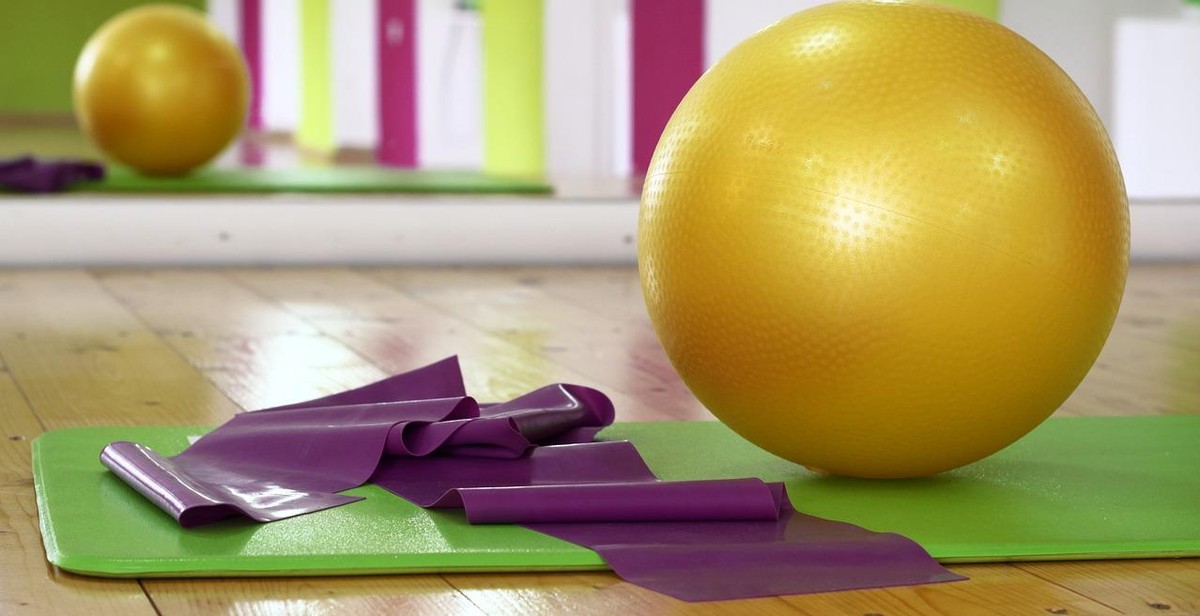How to Do Yoga at Home: Online Classes and Beginner’s Poses for a Peaceful Practice
Yoga is a great way to improve your physical and mental health, and it’s easy to get started with a home practice. With online classes and beginner’s poses, you can enjoy the benefits of yoga from the comfort of your own home.
Why Practice Yoga at Home?
Practicing yoga at home is convenient, cost-effective, and flexible. You can tailor your practice to your own schedule and needs, and you don’t have to worry about commuting to a studio or gym. Plus, practicing yoga at home can be a more peaceful and intimate experience, allowing you to focus on your own breath and body without any external distractions.
Online Yoga Classes
Online yoga classes are a great way to learn new poses and sequences, and to connect with a community of like-minded yogis. With a variety of classes available, you can choose the style and level of yoga that suits you best. Many online yoga platforms also offer free trials or low-cost memberships, making it easy to try out different classes and find what works for you.
Beginner’s Poses
If you’re new to yoga, it’s important to start with beginner’s poses that are safe and accessible. Simple poses like downward dog, child’s pose, and warrior II can help you build strength, flexibility, and balance. As you become more comfortable with these poses, you can gradually add more challenging poses to your practice.
In this article, we’ll explore the benefits of practicing yoga at home, and provide tips for finding online classes and beginner’s poses to help you establish a peaceful and fulfilling yoga practice.
Benefits of Practicing Yoga at Home
Practicing yoga at home has numerous benefits that go beyond just physical fitness. Here are some of the top benefits of practicing yoga at home:
Flexibility and Strength
One of the most obvious benefits of practicing yoga at home is increased flexibility and strength. When you practice yoga regularly, you’ll notice that your muscles become more toned and flexible, allowing you to move more easily and comfortably throughout the day. At home, you can practice yoga at your own pace and choose the poses that work best for your body, helping you to build strength and flexibility in a safe and effective way.
Stress Relief
Another major benefit of practicing yoga at home is stress relief. Yoga is known to be an effective way to reduce stress and anxiety, and practicing at home can be even more beneficial. When you practice yoga at home, you can create a peaceful and calming environment that helps you to relax and unwind. You can also choose the yoga poses and sequences that work best for you, helping you to release tension and stress from your body and mind.
Convenience
Perhaps one of the biggest benefits of practicing yoga at home is convenience. When you practice yoga at home, you don’t have to worry about commuting to a studio or gym, finding parking, or fitting your schedule around class times. Instead, you can practice yoga whenever and wherever it’s convenient for you. This can be especially helpful for busy people who have limited time for exercise or who prefer to work out in the comfort of their own home.
| Benefits of Practicing Yoga at Home | |
|---|---|
| Increased flexibility and strength | Reduced stress and anxiety |
| Convenient and flexible |
Overall, practicing yoga at home is a convenient, effective, and enjoyable way to improve your physical fitness, mental health, and overall well-being. Whether you’re a beginner or an experienced yogi, there are plenty of online classes and beginner’s poses that can help you start your own peaceful yoga practice at home.

Preparing for Your Home Yoga Practice
If you’re new to practicing yoga at home, it’s important to create a dedicated space that will help you stay focused and comfortable. Here are some tips to help you prepare:
Creating a Dedicated Space
Find a quiet and clutter-free area in your home where you can practice yoga without any distractions. This could be a spare room, a corner of your bedroom, or even your living room. Make sure there’s enough space to move around and stretch out comfortably.
You can also decorate your space with items that inspire you, such as candles, plants, or a favorite piece of artwork. This will help create a peaceful and calming atmosphere that will enhance your practice.
Gathering Your Equipment
Before you begin your practice, make sure you have all the necessary equipment. This includes a yoga mat, comfortable clothing, and any props you may need, such as blocks, straps, or blankets.
If you’re new to yoga, you may want to invest in a beginner’s yoga kit, which typically includes a mat, blocks, and a strap.
Setting Your Intentions
Before you start your practice, take a moment to set your intentions. This can be as simple as dedicating your practice to someone or something, or setting an intention to focus on a specific aspect of your practice, such as your breath or a particular pose.
Setting intentions can help you stay focused and present during your practice, and can also help you cultivate a deeper connection to your yoga practice.
- Find a quiet and clutter-free space to practice
- Decorate your space with items that inspire you
- Gather all necessary equipment, including a yoga mat and props
- Set your intentions before starting your practice
By following these tips, you’ll be well on your way to creating a peaceful and fulfilling home yoga practice.

Beginner Yoga Poses for Your Home Practice
Starting a yoga practice at home can be intimidating, but it doesn’t have to be. With a few basic poses, you can start building a foundation for a peaceful and fulfilling practice. Here are five beginner yoga poses to get you started:
Mountain Pose (Tadasana)
Mountain pose is the foundation for all standing poses in yoga. Stand with your feet hip-width apart and press down through all four corners of your feet. Engage your thighs and lift your kneecaps. Lengthen your tailbone toward the floor and lift the crown of your head toward the ceiling. Take a few deep breaths here, feeling yourself rooted and grounded.
Downward-Facing Dog (Adho Mukha Svanasana)
Downward-facing dog is a classic yoga pose that stretches the hamstrings, calves, and spine. Start on your hands and knees, with your wrists under your shoulders and your knees under your hips. Spread your fingers wide and press down through your palms. Tuck your toes and lift your hips up and back, straightening your legs as much as possible. Keep your head between your upper arms and breathe deeply.
Warrior II (Virabhadrasana II)
Warrior II is a strong standing pose that strengthens the legs and opens the hips. Start in mountain pose, then step your left foot back about 3-4 feet. Turn your left foot out 90 degrees and your right foot in slightly. Bend your right knee over your ankle and extend your arms out to the sides, palms facing down. Gaze over your right fingertips and breathe deeply.
Tree Pose (Vrksasana)
Tree pose is a balancing pose that strengthens the legs and core. Start in mountain pose and shift your weight onto your left foot. Place your right foot on your left thigh (or calf, if that’s too challenging) and press your foot into your leg. Bring your hands to your heart center and breathe deeply. Repeat on the other side.
Child’s Pose (Balasana)
Child’s pose is a gentle stretch for the back and hips. Start on your hands and knees, then bring your big toes together and sit back on your heels. Walk your hands forward and rest your forehead on the mat. Take a few deep breaths here, feeling your spine lengthen and your hips release.
These five beginner yoga poses are a great foundation for your home practice. Remember to breathe deeply and listen to your body. If a pose doesn’t feel right, modify or skip it. With time and practice, you’ll build strength, flexibility, and peace of mind.

Online Yoga Classes for Your Home Practice
Online yoga classes are a great way to bring a peaceful practice to your home. With the convenience of being able to practice at any time, online classes are perfect for those with a busy schedule or those who prefer the comfort of their own home. Here are some benefits of online classes, tips for choosing the right class, and tips for a successful online class.
Benefits of Online Classes
- Convenience – you can practice anytime, anywhere
- Cost-effective – online classes are often more affordable than in-person classes
- Diversity – there are many different types of online classes to choose from, including different styles, teachers, and levels
- Flexibility – you can choose the duration of your practice and the level of intensity
Choosing the Right Online Class
When choosing an online yoga class, it’s important to consider your experience level, preferred style of yoga, and any specific goals you may have. Here are some tips to help you choose the right class:
- Read reviews and ratings from other students
- Check the credentials and experience of the teacher
- Look for classes that match your experience level
- Consider the style of yoga and whether it aligns with your goals
Tips for a Successful Online Class
Here are some tips to help you have a successful online yoga class:
- Create a dedicated space for your practice
- Set aside a specific time for your practice
- Ensure you have a stable internet connection
- Use a good quality yoga mat and props as needed
- Minimize distractions by turning off your phone and other devices
| Tip: | Try a few different online classes to find the right fit for you. |
Overall, online yoga classes offer a convenient and cost-effective way to bring a peaceful practice to your home. By choosing the right class and following these tips, you can have a successful and enjoyable online yoga experience.
